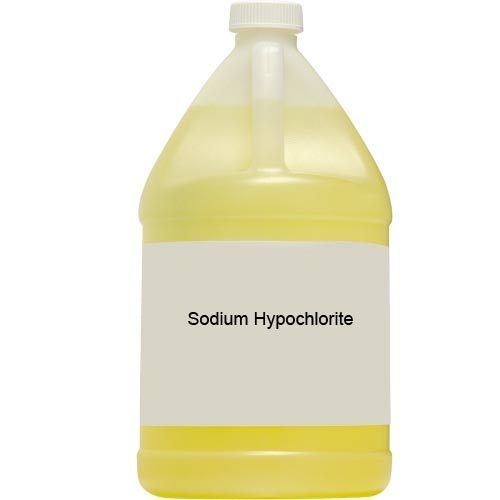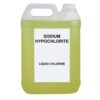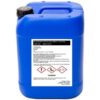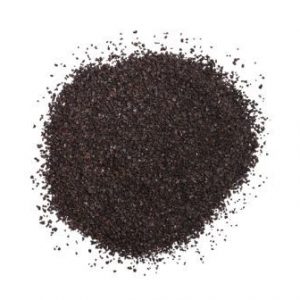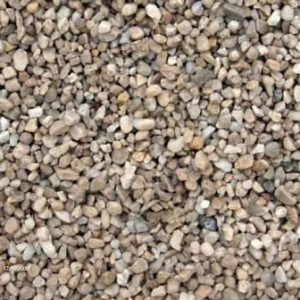Description
Sodium hypochlorite is a chemical compound with the formula NaOCl or NaClO, comprising a sodium cation (Na+) and a hypochlorite anion (OCl or ClO). It may also be viewed as the sodium salt of hypochlorous acid. The anhydrous compound is unstable and may decompose explosively. It can be crystallized as a pentahydrate NaOCl·5H2O, a pale greenish-yellow solid which is not explosive and is stable if kept refrigerated. Sodium hypochlorite is most often encountered as a pale greenish-yellow dilute solution commonly known as liquid bleach or simply bleach, a household chemical widely used (since the 18th century) as a disinfectant or a bleaching agent. The compound in solution is unstable and easily decomposes, liberating chlorine, which is the active principle of such products. Indeed, sodium hypochlorite is the oldest and still most important chlorine-based bleach.Its corrosive properties, common availability, and reaction products make it a significant safety risk. In particular, mixing liquid bleach with other cleaning products, such as acids or ammonia, may produce toxic fumes.
Equilibria and stability of solutions
At typical ambient temperatures, sodium hypochlorite is more stable in dilute solutions that contain solvated Na+
and OCl ions. The density of the solution is 1.093 g/mL at 5% concentration,[14] and 1.21 g/mL at 14%, 20 °C.[15] Stoichometric solutions are fairly alkaline, with pH 11 or more[6] since hypochlorous acid is a weak acid: OCl−
- + H
2O ⇌ HOCl + OH−
The following species and equilibria are present in solutions of NaOCl:
- HOCl (aq) ⇌ H+
+ OCl−
- HOCl (aq) + Cl−
+ H+
⇌ Cl
2 (aq) + H
2O - Cl
2 (aq) + Cl−
⇌ Cl−
3 - Cl
2 (aq) ⇌ Cl
2 (g)
The second equilibrium equation above will be shifted to the right if the chlorine Cl
2 is allowed to escape as gas. The ratios of Cl
2, HOCl, and OCl−
in solution are also pH dependent. At pH below 2, the majority of the chlorine in the solution is in the form of dissolved elemental Cl
2. At pH greater than 7.4, the majority is in the form of hypochlorite ClO−
.[7] The equilibrium can be shifted by adding acids (such as hydrochloric acid) or bases (such as sodium hydroxide) to the solution:
- ClO−
(aq) + 2 HCl (aq) → Cl
2 (g) + H
2O (aq) + Cl−
(aq) - Cl
2 (g) + 2 OH−
→ ClO−
(aq) + Cl−
(aq) + H
2O (aq)
At a pH of about 4, such as obtained by the addition of strong acids like hydrochloric acid, the amount of undissociated (nonionized) HOCl is highest. The reaction can be written as:
- ClO−
+ H+
⇌ HClO
Sodium hypochlorite solutions combined with acid evolve chlorine gas, particularly strongly at pH < 2, by the reactions:
- HOCl (aq) + Cl−
+ H+
⇌ Cl
2 (aq) + H
2O - Cl
2 (aq) ⇌ Cl
2 (g)
At pH > 8, the chlorine is practically all in the form of hypochlorite anions (OCl−
). The solutions are fairly stable at pH 11–12. Even so, one report claims that a conventional 13.6% NaOCl reagent solution lost 17% of its strength after being stored for 360 days at 7 °C.[6] For this reason, in some applications one may use more stable chlorine-releasing compounds, such as calcium hypochlorite Ca(ClO)
2 or trichloroisocyanuric acid (CNClO)
3.
Anhydrous sodium hypochlorite is soluble in methanol, and solutions are stable.[citation needed]
Decomposition to chlorate or oxygen
In solution, under certain conditions, the hypochlorite anion may also disproportionate (autoxidize) to chloride and chlorate:[17]
- 3 ClO−
+ H+
→ HClO
3 + 2 Cl−
In particular, this reaction occurs in sodium hypochlorite solutions at high temperatures, forming sodium chlorate and sodium chloride:[17][18]
- 3 NaOCl (aq) → 2 NaCl (aq) + NaClO
3 (aq)
This reaction is exploited in the industrial production of sodium chlorate.
An alternative decomposition of hypochlorite produces oxygen instead:
- 2 OCl−
→ 2 Cl−
+ O
2
In hot sodium hypochlorite solutions, this reaction competes with chlorate formation, yielding sodium chloride and oxygen gas:[17]
- 2 NaOCl (aq) → 2 NaCl (aq) + O
2 (g)
These two decomposition reactions of NaClO solutions are maximized at pH around 6. The chlorate-producing reaction predominates at pH above 6, while the oxygen one becomes significant below that. For example, at 80 °C, with NaOCl and NaCl concentrations of 80 mM, and pH 6–6.5, the chlorate is produced with ∼95% efficiency. The oxygen pathway predominates at pH 10.[17] This decomposition is affected by light[18] and metal ion catalysts such as copper, nickel, cobalt,[17] and iridium.[19] Catalysts like sodium dichromate Na
2Cr
2O
7 and sodium molybdate Na
2MoO
4 may be added industrially to reduce the oxygen pathway, but a report claims that only the latter is effective.[17]
Titration
Titration of hypochlorite solutions is often done by adding a measured sample to an excess amount of acidified solution of potassium iodide (KI) and then titrating the liberated iodine (I
2) with a standard solution of sodium thiosulfate or phenyl arsine oxide, using starch as indicator, until the blue color disappears.[11]
According to one US patent, the stability of sodium hypochlorite content of solids or solutions can be determined by monitoring the infrared absorption due to the O–Cl bond. The characteristic wavelength is given as 140.25 μm for water solutions, 140.05 μm for the solid dihydrate NaOCl·2H
2O, and 139.08 μm for the anhydrous mixed salt Na
2(OCl)(OH).[13]
Oxidation of organic compounds
Oxidation of starch by sodium hypochlorite, that adds carbonyl and carboxyl groups, is relevant to the production of modified starch products.[20]
In the presence of a phase-transfer catalyst, alcohols are oxidized to the corresponding carbonyl compound (aldehyde or ketone).[21][6] Sodium hypochlorite can also oxidize organic sulfides to sulfoxides or sulfones, disulfides or thiols to sulfonyl chlorides or bromides, imines to oxaziridines.[6] It can also de-aromatize phenols.[6]
Oxidation of metals and complexes
Heterogeneous reactions of sodium hypochlorite and metals such as zinc proceed slowly to give the metal oxide or hydroxide:
- NaOCl + Zn → ZnO + NaCl
Homogeneous reactions with metal coordination complexes proceed somewhat faster. This has been exploited in the Jacobsen epoxidation.
Other reactions
If not properly stored in airtight containers, sodium hypochlorite reacts with carbon dioxide to form sodium carbonate:
- 2 NaOCl + CO
2 + H
2O → Na
2CO
3 + 2 HOCl
Sodium hypochlorite reacts with most nitrogen compounds to form volatile monochloramine, dichloramines, and nitrogen trichloride:
- NH
3 + NaOCl → NH
2Cl + NaOH - NH
2Cl + NaOCl → NHCl
2 + NaOH - NHCl
2 + NaOCl → NCl
3 + NaOH

